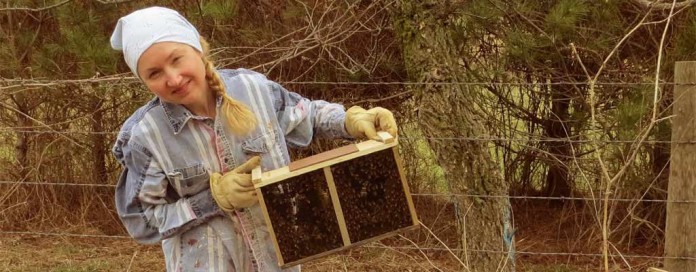Colony collapse disorder and last winter’s vortex cold weather took a major toll on our region’s bee population. Worldwide, the declining pollinator population threatens our global food supply and security. This summer the Federal Government pledged to protect pollinator health and habitats in a White House Memorandum.
Has the buzz about bees caused you to consider adding a few hives to your backyard? Backyard beekeeping is a great way to help restore pollinator numbers. It also ensures adequate pollination of your garden crops. Plus, being a beekeeper gives you access to your very own supply of sweet, golden, local honey- it doesn’t get better than that!
Related: How to build a bee box for native pollinators
Whatever motivates you to be a beekeeper, good planning and preparation are crucial. Fall is the time to procure supplies, learn skills and build connections for thriving spring hives.
Supplies
Bees. Reserve bees now. Reputable local suppliers sell out quickly; if you wait until spring you may miss your chance. Online apiaries take orders in fall for spring shipment. A typical apiary bee package weighs 3lbs, costs about $100, and includes a queen. Expert beekeepers recommend starting with two hives to ensure strength and vitality of bee colonies. Purchase one bee package per hive.
Hives and frames. Hive kits include everything you need to establish a productive hive: supers, frames, inner cover, outer cover and platform. A hive kit costs about $175, some assembly required. Alternatively, you can download free hive blueprints online and build your own hives. Bee suppliers sell frame components that fit homemade hives for less than $20.
Hive tool. A hive tool is a crowbar-like tool used to work hives. An actual crowbar, screwdriver, pocket knife or paint scraper also gets the job done.
Smoker. Smoking hives before inspection helps keep bees calm and submissive. A small stainless steel smoker filled with smoldering brush is standard.
Protective gear, veil, gloves, suit/jacket. The amount of protective gear you need depends on your comfort level with bees. I started out fully covered in personal protective equipment. Today, I only add a veil and long gloves to my normal attire.
Books and magazines keep you up-to-date on bee news and are useful references.
Skills
Several bee supply companies offer beekeeping basics courses online. Online courses are a good introduction or way to brush up rusty beekeeping skills.
Some county Cooperative Extension Offices and local nature centers conduct beekeeping classes. Beekeeper teachers share their knowledge, experience and provide hands-on activities to help beginners learn to proficiently handle their hives.
Connections
Beekeepers associations exist at state, regional and local levels. Independent beekeepers clubs have become increasingly popular. Joining an association connects beginners to expert beekeepers. Associations also sponsor educational events and provide mentorship support.














We’d love to help out new beekeepers in Ohio and Western PA. Feel free to stop in and visit us in Ravenna, Ohio. We are located a few miles from I-80 and I-76. We are just about 35 minutes from the PA border. http://www.blueskybeesupply.com (877) 529-9233